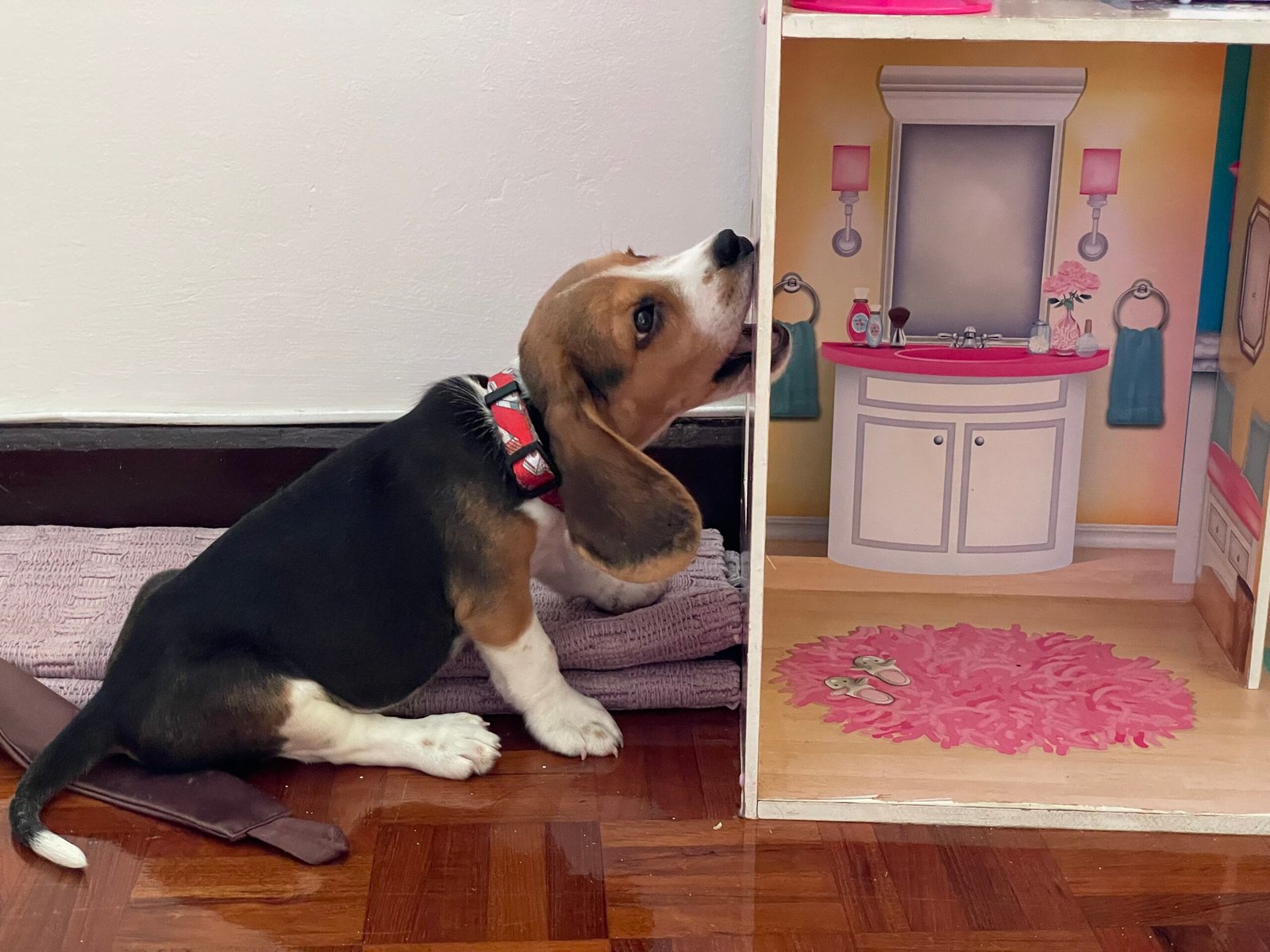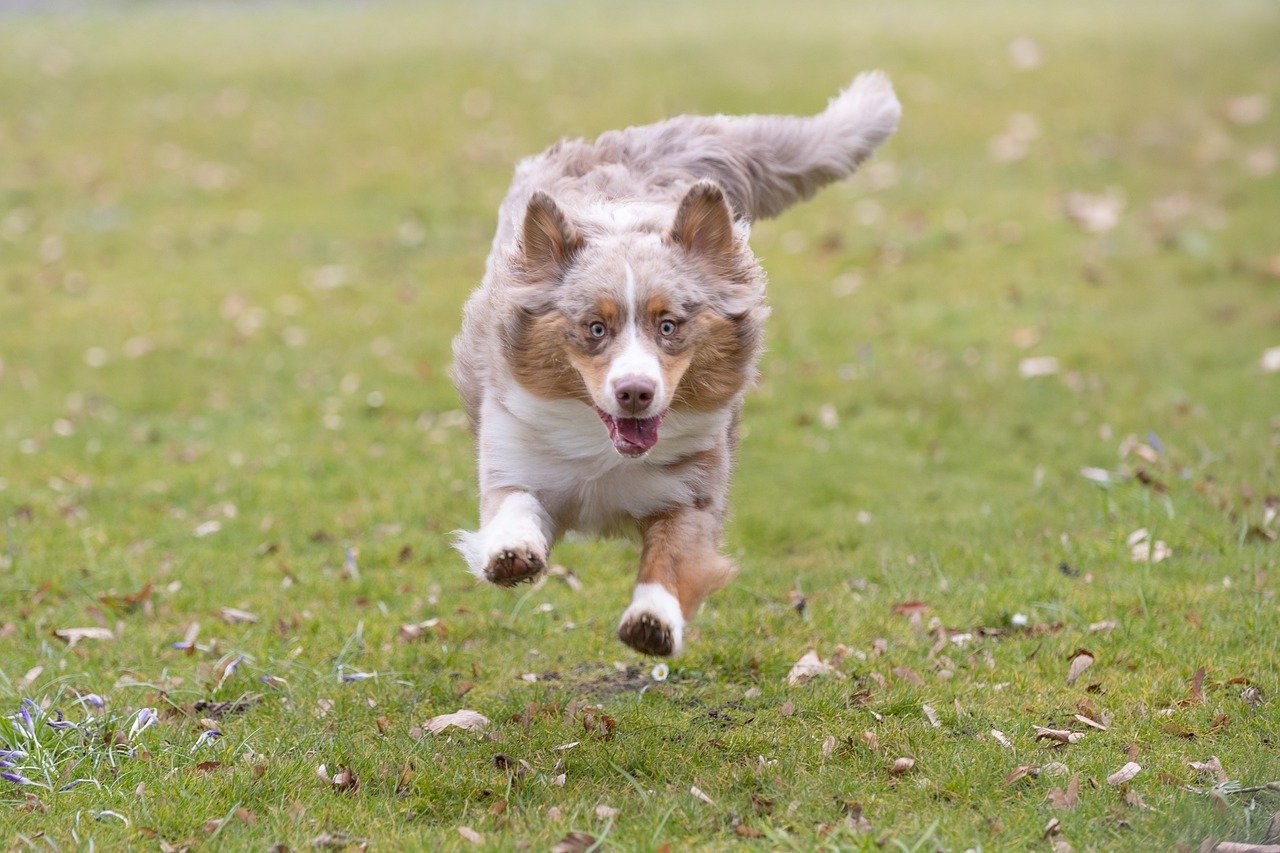Some dogs are born to run, herd, and play — and they’ll definitely let you know when they’re craving more action. From constant pacing to mischievous behavior, the signs of a restless pup are hard to miss. On the flip side, some breeds are perfectly content snoozing in the sun or lounging by your side. In this guide, we’ll explore which behaviors signal your dog needs more exercise and highlight 10 breeds that are just fine with a laid-back lifestyle. Whether your pup is a go-getter or a couch potato, understanding their needs helps keep them happy and healthy on the farm or at home.
Restless Pacing and Circling
When a dog starts moving around the house without any obvious reason, it’s often a silent plea for more activity. You might notice your pup pacing back and forth, circling the living room, or even trotting between rooms as if searching for something to do. This restlessness isn’t just a quirky behavior—it’s their way of saying, “Let’s do something fun!” I’ve seen my own dog act like a furry tornado when she misses her daily walk. If you notice this, it’s probably time to grab the leash and head outside. Dogs need both mental and physical stimulation, and pacing is a classic sign they’re not getting enough of either.
Destructive Chewing

Ever come home to find your favorite shoes torn to bits or the remote control chewed into unrecognizable pieces? This isn’t just “bad behavior”—it’s often a desperate sign from your dog that they’re bored and under-exercised. Chewing is a natural stress reliever for dogs, and when they don’t get enough movement, they’ll find other, less-desirable ways to burn off energy. If you’re finding more destruction than usual, your dog might be telling you, in the only way they know how, that they need a longer walk or a rowdy play session. It’s not mischief—it’s a message!
Barking for Attention
Dogs communicate with us in all kinds of ways, and barking is one of the loudest. If your dog starts barking at you without an obvious trigger—no strangers at the door, no squirrels in the yard—they might be trying to get your attention for a reason. Sometimes, this persistent barking is their way of saying, “Let’s go outside!” or “I’m bored!” Some dogs will even bring you their leash or nudge you with their nose to make their point crystal clear. Don’t ignore these vocal hints. They’re practically spelling it out for you!
Weight Gain and Lethargy
Dogs that don’t get enough exercise can start gaining weight, just like people do. But here’s the twist—sometimes a dog becomes less active because they’re not getting out enough, not the other way around! If you notice your pup is putting on pounds or seems more sluggish than usual, lack of exercise could be the culprit. It becomes a cycle: less exercise equals more weight, which leads to even less movement. Breaking that cycle with regular activity will help your dog feel lighter, happier, and healthier.
Frequent Zoomies Indoors
The “zoomies”—when your dog suddenly sprints around the house at lightning speed—are hilarious to watch, but they can also be a sign of pent-up energy. Dogs often get these bursts of wildness when they haven’t had enough time outdoors. It’s their way of releasing the excitement that’s been building up all day. While a case of the zoomies is normal once in a while, if it happens daily, your dog is practically begging for more playtime outside. Think of it as your dog’s version of bouncing off the walls!
Hyperactivity and Trouble Settling Down

Some dogs just can’t seem to relax—they’re always alert, jumping up at every sound, and never seem to settle in for a good nap. If your dog is constantly on edge and unable to chill, it might be a sign they’re not burning off enough energy during the day. Imagine being cooped up all day with nowhere to go and nothing to do—it would drive anyone a little crazy! Giving your dog more exercise can help them feel calmer, more satisfied, and less jittery at home.
Stealing Food or Objects
Dogs who are bored or under-exercised often get creative in their search for entertainment. Suddenly, socks go missing, food disappears from the counter, and your dog seems to have a talent for mischief. This isn’t just bad manners—it’s often a cry for more engagement. When dogs don’t get enough exercise, they turn to scavenging and stealing as a way to entertain themselves. Increasing their daily activity can curb this behavior and keep both your belongings and your dog safe.
Digging in the Yard

If your backyard looks like a minefield, your dog may be digging out of boredom. Digging is a natural instinct, but when it becomes excessive, it’s often because your dog isn’t getting enough stimulation. Dogs need ways to explore, sniff, and use their bodies—and if they’re not getting it on walks or during play, they’ll create their own fun. More exercise and a bit of extra playtime can help redirect this energy into healthier outlets.
Whining and Clinginess

Some dogs become extra needy or whiny when they’re feeling under-stimulated. You might notice your pup following you everywhere, pawing at your leg, or making sad little noises. This isn’t just a bid for affection—it’s also a sign they want more engagement and activity. A dog that’s tired from a good walk or game is usually much more content to relax quietly nearby. If your dog is suddenly your shadow, consider adding an extra outing to your routine.
Difficulty Sleeping at Night

Believe it or not, dogs that don’t get enough activity during the day can have trouble settling down at night. They might toss and turn, pace, or even wake you up for attention. Just like kids who haven’t played enough, they’re too wound up to rest. Making sure your dog gets enough exercise isn’t just about physical health—it also helps them sleep soundly, which makes life better for everyone in the house.
Bulldog: The King of Couch Potatoes
When it comes to lounging, Bulldogs are in a league of their own. These lovable pups are famous for their laid-back personalities and short bursts of playful energy that fade quickly into nap time. Bulldogs much prefer snuggling on the sofa to running marathons. Their stocky build and easygoing nature make them perfect companions for anyone who enjoys a relaxed pace. If you’re looking for a dog that’s happy to laze around, the Bulldog is a top choice.
Basset Hound: Masters of Relaxation

With their droopy eyes and long ears, Basset Hounds practically invented the art of relaxation. They enjoy leisurely strolls but are just as happy stretched out on a comfy rug. These dogs have a reputation for being mellow and sweet-natured, making them ideal for families who prefer a calm household. Basset Hounds don’t demand hours of exercise and are content with a simple life of love, snacks, and naps.
Great Dane: Gentle Giants Who Love Lounging
Despite their massive size, Great Danes are surprisingly low-energy dogs. They love to spend time with their people but are just as happy lounging around the living room. Their calm, gentle nature makes them wonderful companions for those with a bit of extra space and a love for quiet afternoons. Don’t let their size fool you—Great Danes would rather chill than chase.
Shih Tzu: Small but Satisfied Indoors

Shih Tzus are the ultimate lap dogs. These compact cuties are perfectly content living a life of luxury indoors, with short walks and lots of cuddles. Their playful moments are balanced by long stretches of relaxation, making them an excellent choice for apartment dwellers or anyone who prefers a dog that doesn’t need constant activity. Shih Tzus are happiest when they’re close to their humans, enjoying the slow life.
Chow Chow: Independent and Low-Key

Chow Chows are known for their dignified, independent personalities. They enjoy their own company and don’t need constant attention or activity to feel satisfied. A daily stroll is usually enough for these fluffy friends, who love to spend the rest of their time lounging in their favorite spot. If you want a dog that values peace and quiet as much as you do, the Chow Chow is a wonderful match.
Cavalier King Charles Spaniel: The Cuddle Champion

These elegant little dogs are famous for their affectionate, easygoing nature. Cavaliers are happiest when they’re snuggled up with their favorite person, whether that’s on the couch or in bed. While they enjoy a gentle walk or light play, they’re not the type to demand hours of activity. Their calm demeanor and love of comfort make them perfect for anyone seeking a loyal, low-key companion.
Mastiff: Serene and Sedate

Mastiffs are gentle giants who embody tranquility. Despite their imposing size, they’re incredibly mellow and content with a relaxed lifestyle. Mastiffs are happiest when they can lounge around with their family, soaking up affection and taking it easy. They need surprisingly little exercise and are well-suited to people who appreciate a big, lazy cuddle buddy.
Pekingese: Regal and Relaxed

Pekingese dogs carry themselves with a regal air, but beneath that royal attitude is a dog that loves to lounge. They’re content with short walks and lots of indoor relaxation. Pekingese don’t need much space or intense activity, making them great for city life or for anyone who wants a dog that enjoys the finer things—like a soft bed and a warm lap.
French Bulldog: Playful but Laid-Back
French Bulldogs are the perfect blend of playful and relaxed. They enjoy a bit of playtime but are equally happy napping in a sunbeam. Frenchies adapt well to apartment living and don’t require long walks or hours of activity. Their sweet, friendly personality shines brightest when they’re with their people, taking it easy and enjoying life’s simple pleasures.
Saint Bernard: Gentle and Unhurried

Saint Bernards might look like they’re built for action, but these gentle giants are more likely to be found snoozing than sprinting. They absolutely adore lounging around with their family and have a calm, patient demeanor. Saint Bernards need some exercise to stay healthy, but they’re far from hyperactive and are content with a few leisurely outings and plenty of relaxation.
Whether your dog is a high-energy sprinter or a professional napper, tuning into their activity needs is key to their overall happiness. Recognizing the signs of restlessness early can prevent boredom-driven behavior, while honoring a laid-back pup’s slower pace keeps them stress-free. Every dog is different, and that’s what makes them special! With the right balance of movement and rest, your furry friend will thrive—whether they’re chasing sheep or chasing dreams on the couch.
Jen is a passionate nature lover and ocean conservationist. She has dedicated her life to protecting the environment and preserving the beauty of the natural world. Growing up in a small coastal town, Jen sincerely appreciated the ocean and its inhabitants. She has spent countless hours exploring the shoreline, learning about the creatures that inhabit the waters, and advocating for their protection. Jen is an active member of ocean conservation organizations, and she is committed to educating the public about the importance of conserving wildlife and the natural environment.





